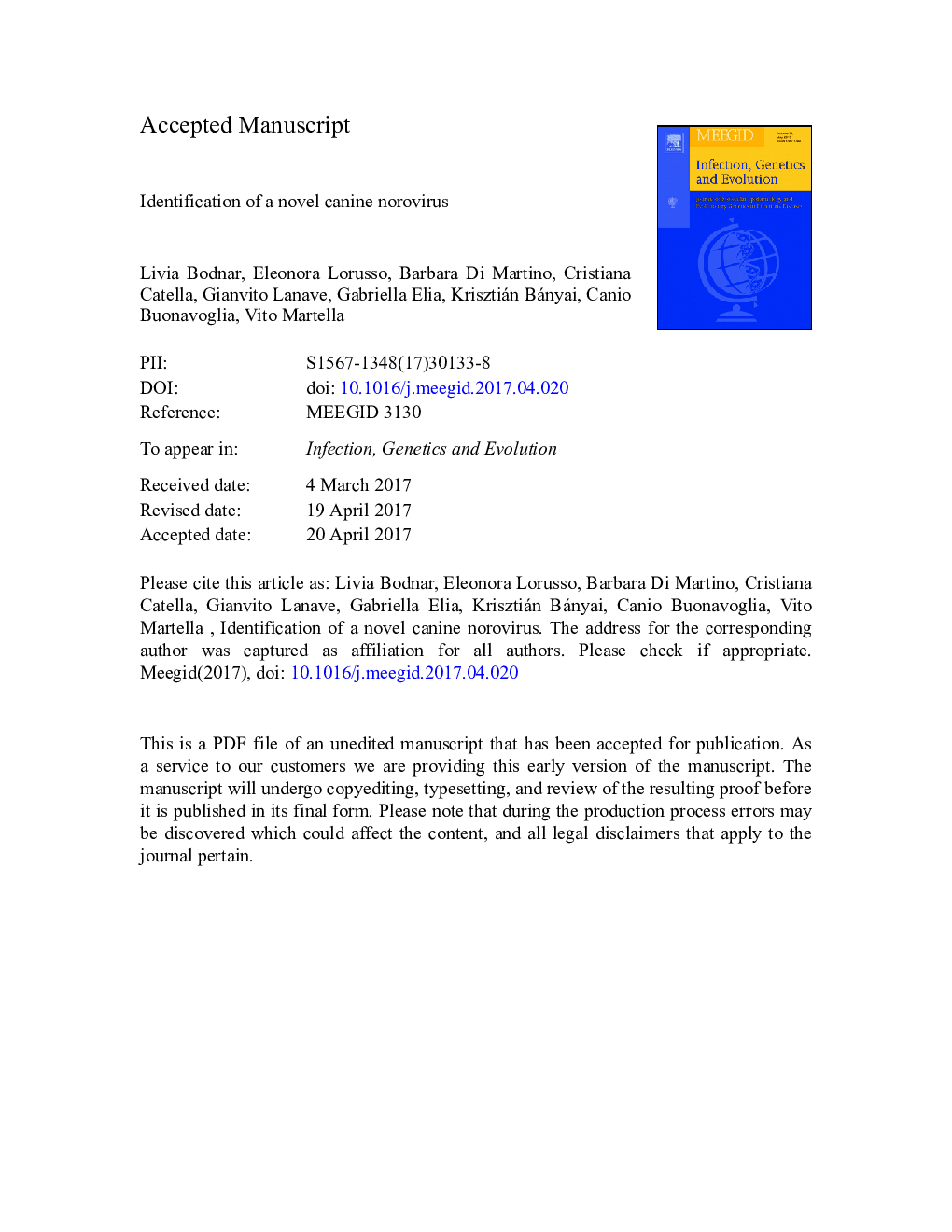| Article ID | Journal | Published Year | Pages | File Type |
|---|---|---|---|---|
| 5590593 | Infection, Genetics and Evolution | 2017 | 33 Pages |
Abstract
By screening a collection of fecal samples from young dogs from different European countries, noroviruses (NoVs) were found in 13/294 (4.4%) animals with signs of enteritis whilst they were not detected in healthy dogs (0/42). An informative portion of the genome (3.4Â kb at the 3â² end) was generated for four NoV strains. In the capsid protein VP1 region, strains 63.15/2015/ITA and FD53/2007/ITA were genetically related to the canine GVI.2 strain C33/Viseu/2007/PRT (97.4-98.6% nt and 90.3-98.6% aa). Strain FD210/2007/ITA displayed the highest identity to the GVI.1 canine strain Bari/91/2007/ITA (88.0% nt and 95.0% aa). Strain 5010/2009/ITA displayed only 66.6-67.6% nt and 75.5-81.6% aa identities to the GVI.1 canine strains FD210/2007/ITA and Bari/91/2007/ITA and the GVI feline strain M49-1/2012/JPN. Identity to the other canine/feline NoVs strains in the VP1 was lower than 67.6% nt and 62.7% aa. Based on the full-length VP1 amino acid sequence and the criteria proposed for distinction of NoV genotypes, the canine NoV 5010/2009/ITA could represent the prototype of a third GVI genotype, thus providing further evidence for the genetic heterogeneity of NoVs in carnivores.
Related Topics
Life Sciences
Agricultural and Biological Sciences
Ecology, Evolution, Behavior and Systematics
Authors
Livia Bodnar, Eleonora Lorusso, Barbara Di Martino, Cristiana Catella, Gianvito Lanave, Gabriella Elia, Krisztián Bányai, Canio Buonavoglia, Vito Martella,
